March 18, 2018
Unlike many of the tourist spots of inland Mexico, the city of Puebla was not built on the ruins of an indigenous settlement. Instead, the conquering Spaniards decided to build a "modern" city 9 miles east of Cholula. It was founded in 1531, which I guess is much more modern than when Cholula was founded roughly 2,000 years earlier.
The original site of Puebla kept getting flooded, so most of the settlers moved to higher ground within a few years. Within about 70 years, the city comprised 120 blocks and a partially-constructed cathedral.
In 1987, the historic city center was declared a UNESCO World Heritage Site.
Puebla is a wonderful walking city with lots to look at in the old town area.
The Museum of the Revolution was once the home of the Serdán family, who opposed the "re-election" of the Mexican dictator Porfirio Diaz and supported the revolution led by Francisco Madero. A raid was carried out on this house on November 18, 1910. After more than three hours of gunfire between the members of the household and 500 soldiers, almost all of the revolutionaries inside the house were dead. This event is considered the start of the Mexican Revolution. The bullet holes from the exchange still pepper the exterior walls.
A huge carved head of Aquiles Serdán Alatriste, the owner of the home and one of the murdered revolutionaries, sits on a pedestal in the entryway.
I love the vibrant colors and crisp details of the Puebla buildings.
What is so important about him to someone like me? In 1646 Bishop Palafox donated 5,000 of his favorite science and philosophy books to the Colegio de San Juan to found the Biblioteca Palafoxiana, the first and therefore oldest public library in the Americas. The building that currently houses Palafox's donation was completed in 1773. It now houses almost ten times as many books and manuscripts as Palafox donated.
The main hall is 141 feet long and includes three levels of bookshelves.
Palafox is quoted as having said that one without books "is in an inconsolable darkness, on a mountain without company, on a path without a crosier, in darkness without a guide."
Amen, Mr. Palafox.
In addition to the original 5,000 books, The Franciscan monk who ordered the construction of the library donated his collection, as did several other friars and bishops and deans. Books confiscated from Jesuits after they were expelled from Mexico in 1767 were also added.
I seriously want one of these ingenious devices that allows a reader to have seven books open at a time. Just spin the wheel to move to the next book. This would solve the problem of the dozen or so books on my nightstand. I could put a couple on each platform and spin to whichever one I wanted to read.
There are quite a few items on display in glass cases. The oldest text in the library, the Nuremberg Chronicle, dates to 1493.
A copy of Sir Isaac Newton's Mathematical Principles of Natural Philosophy is dated 1739. (It was first printed in 1687.)
Need a place to do your homework? This would suffice.
A retablo of the Madonna of Trapani is watching over the researchers, making sure no one turns down a page corner or (*gasp!*) walks out with one of the books.
This gorgeous library is listed on UNESCO's Memory of the World Register. If you like to visit libraries like we do, this one is definitely worth a visit.
Well, it's time for lunch. Arnold took us to Pepita en Comal. Pepita is Spanish for pumpkin seed, and a comal is is a flat griddle.
I was on a real mole kick on this trip, so I tried (and loved) the green mole:
We waddled out of the restaurant and to the Baroque-style Basilica of Puebla, also known as Our Lady of the Immaculate Conception (a very common name for Catholic cathedrals and basilicas). The building was planned in 1557 but construction didn't begin until 1575. After several stops and starts, it was consecrated in 1649 and finally completed in 1690, 115 years after it was begun. The two towers are the tallest church towers in Mexico, but only one tower has bells. Legend has it there is an underground river under the second tower, and adding a bell to the already massive weight of the tower would cause it to either collapse or sink into the river.
While the front facade and exterior walls of this cathedral are made of tired-looking gray-brown bricks, look past the dullness and you'll see striking magenta walls with white trim and a golden dome.
So let's go inside...
I love this dramatic stained glass window. Check out the blue wings.
This church was built by Dominicans at the height of the New Spanish Baroque period in the 17th century. It has been called an 8th Wonder of the World, is nicknamed La Casa de Oro (The Golden House), and is considered one of the greatest religious artistic achievements in Mexico.
If the only Mexican churches you have been exposed to are the primitive border town churches, you are in for a major surprise. While still very Mexican, this chapel is just as spectacular as the great cathedrals of Europe. This is one time when pictures speak better than words. Enjoy.
Even more unusual is this representation of the crucified body of Christ in the tomb. It is the "Lord of the Holy Entombment." Mexicans have a definite flair for the dramatic.
And with that, it was time to make the 2+ hour drive back to Mexico City. Puebla is another city we feel like we could go back to and spend several days enjoying. Sigh.
Popo was still blowing off steam as we said adios.
Tomorrow: Time to go home.







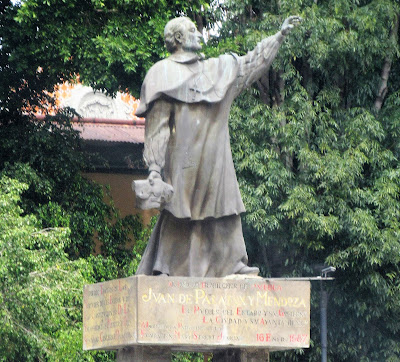



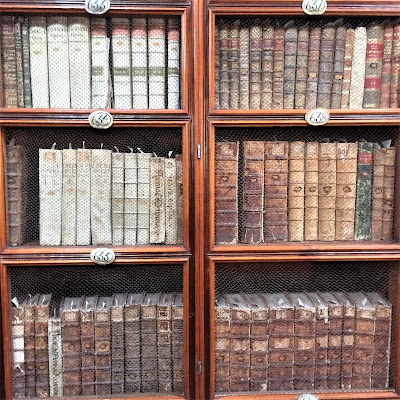
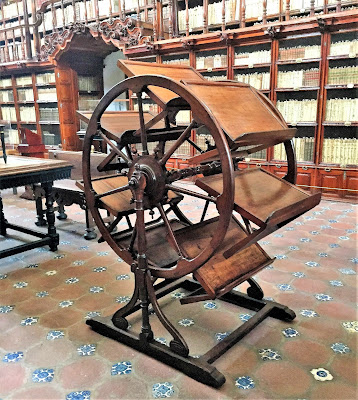



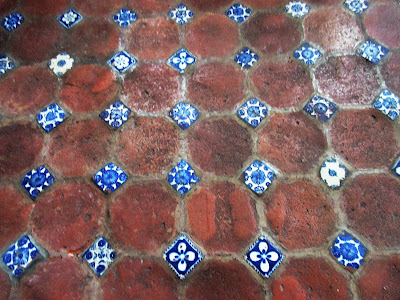
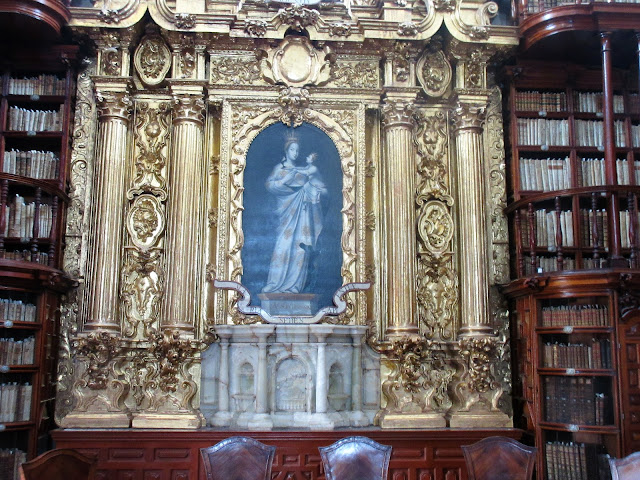






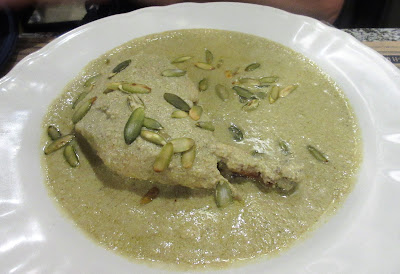


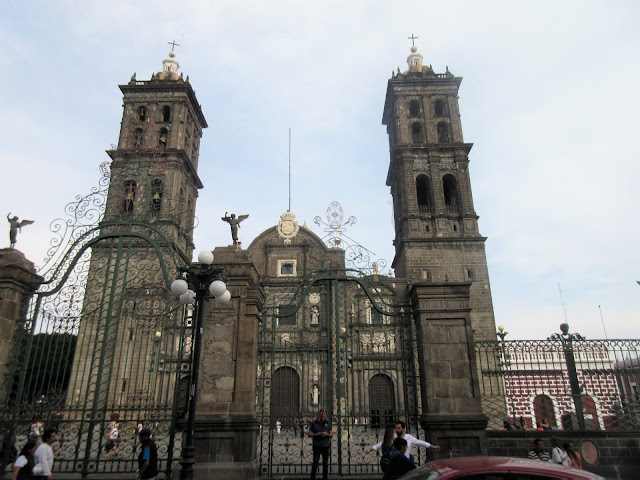
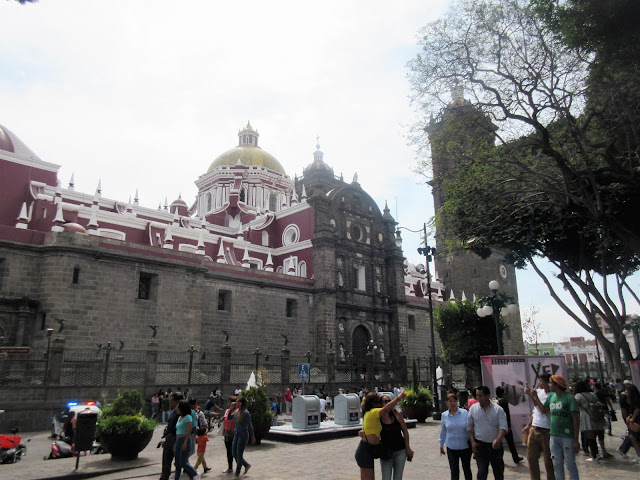


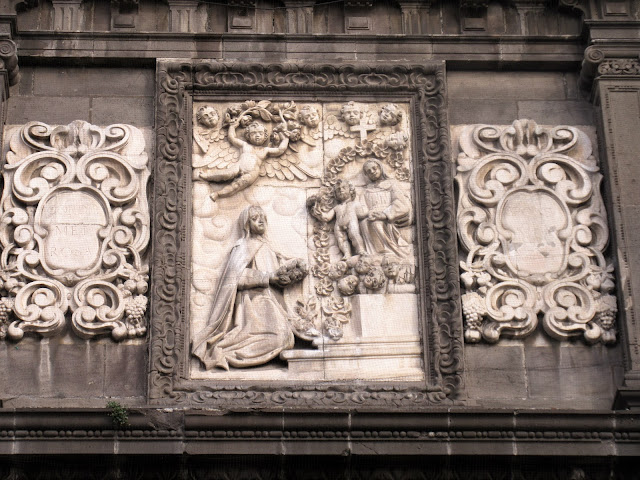

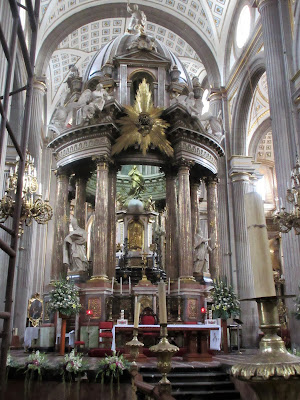



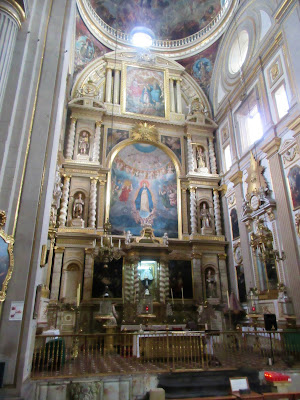





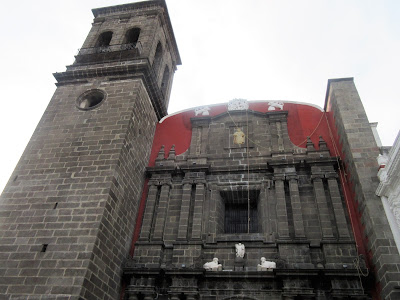



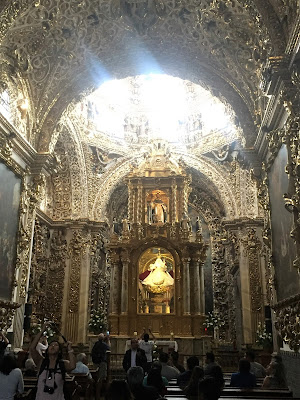

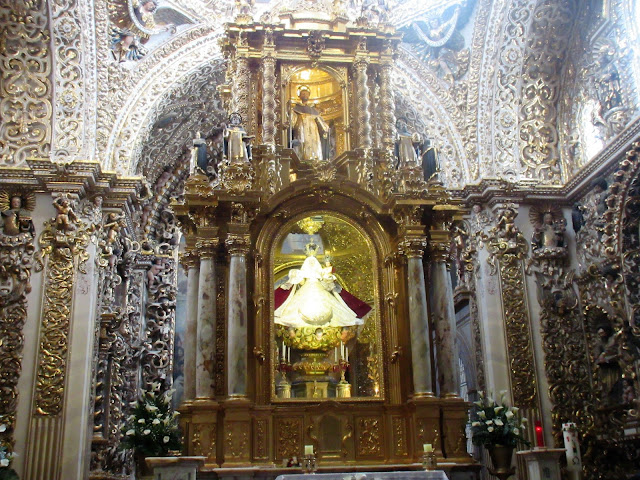




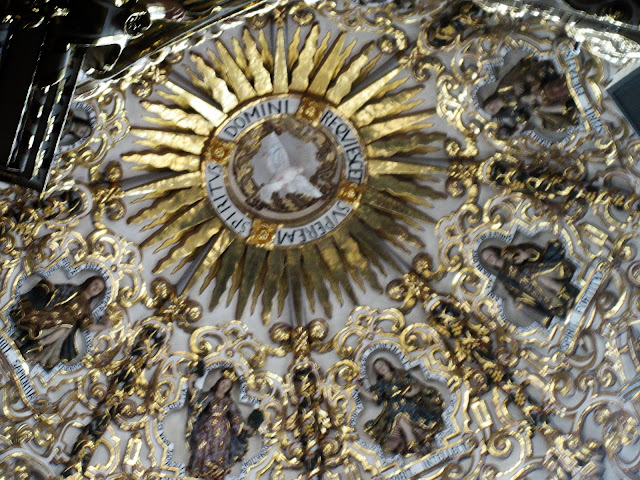
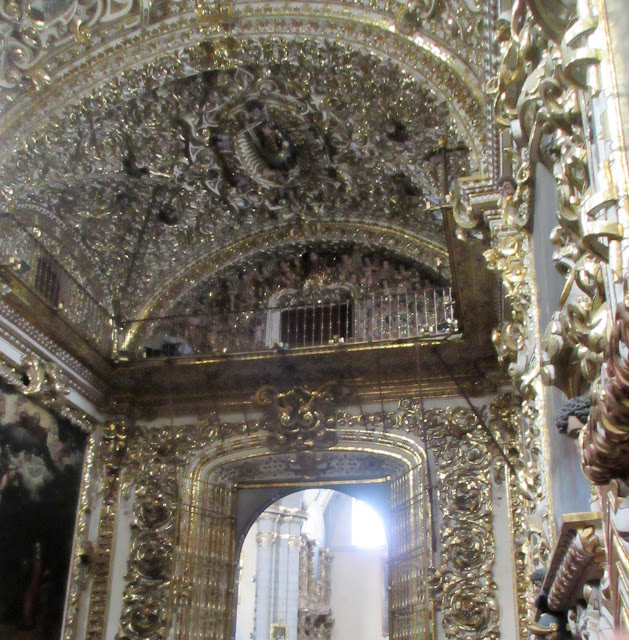
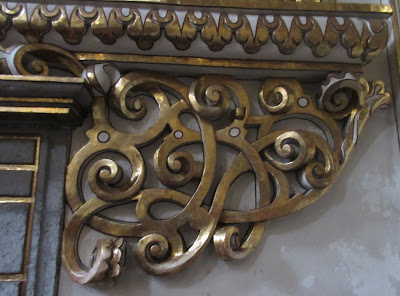



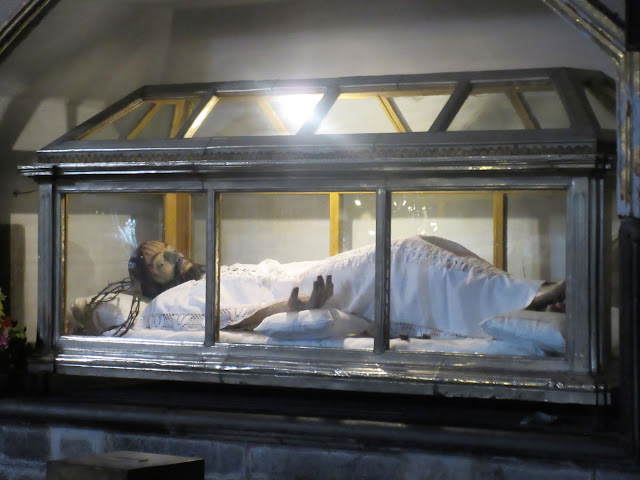
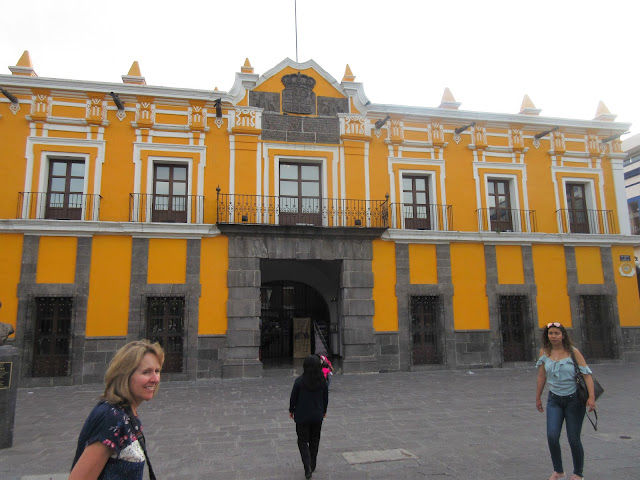




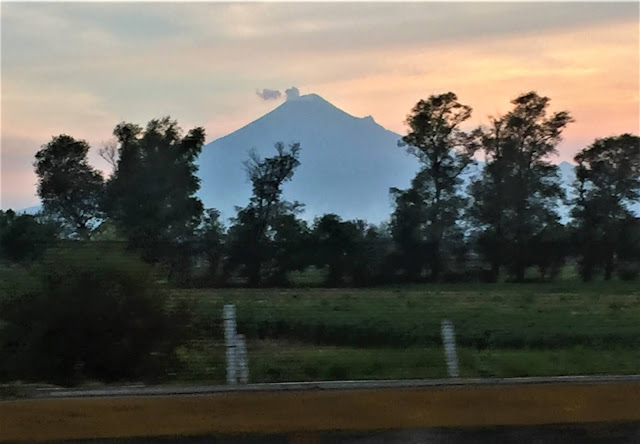
Thank you for sharing those memories, and yes, there should be a marzipan museum.
ReplyDeleteIsn't Mexico great? That chapel of gold was something. Another visit to Cholula/Pueblo is in order.
ReplyDelete